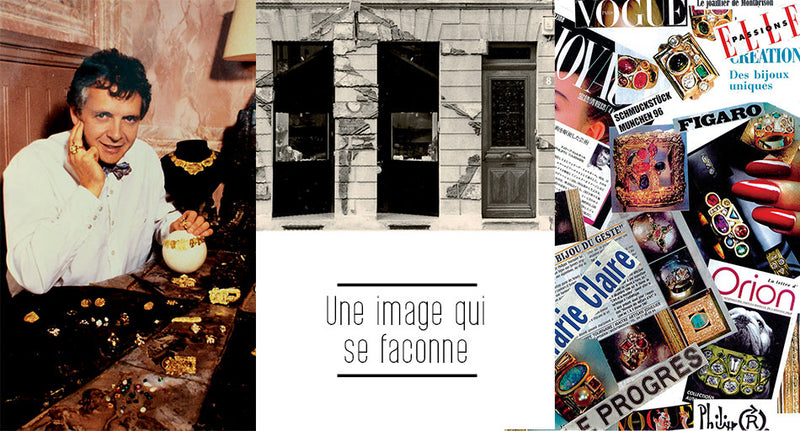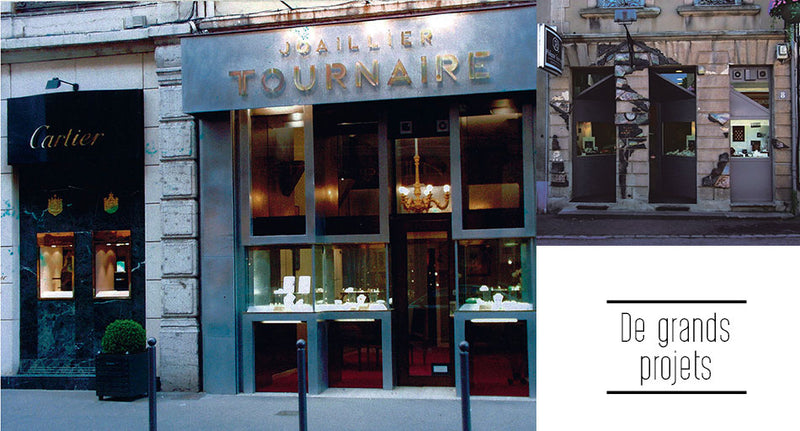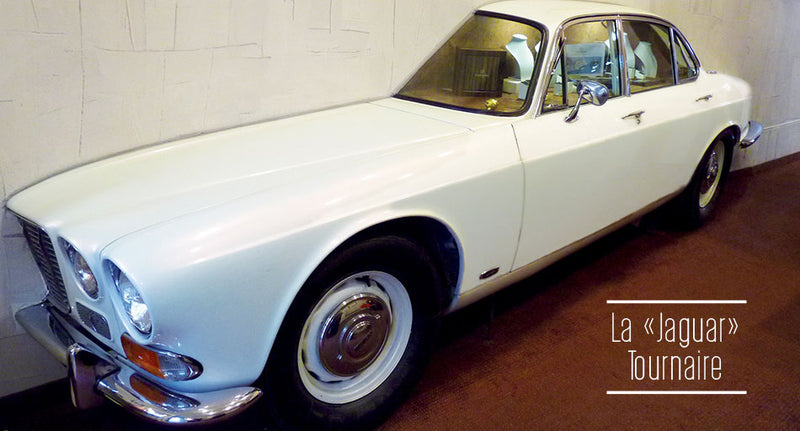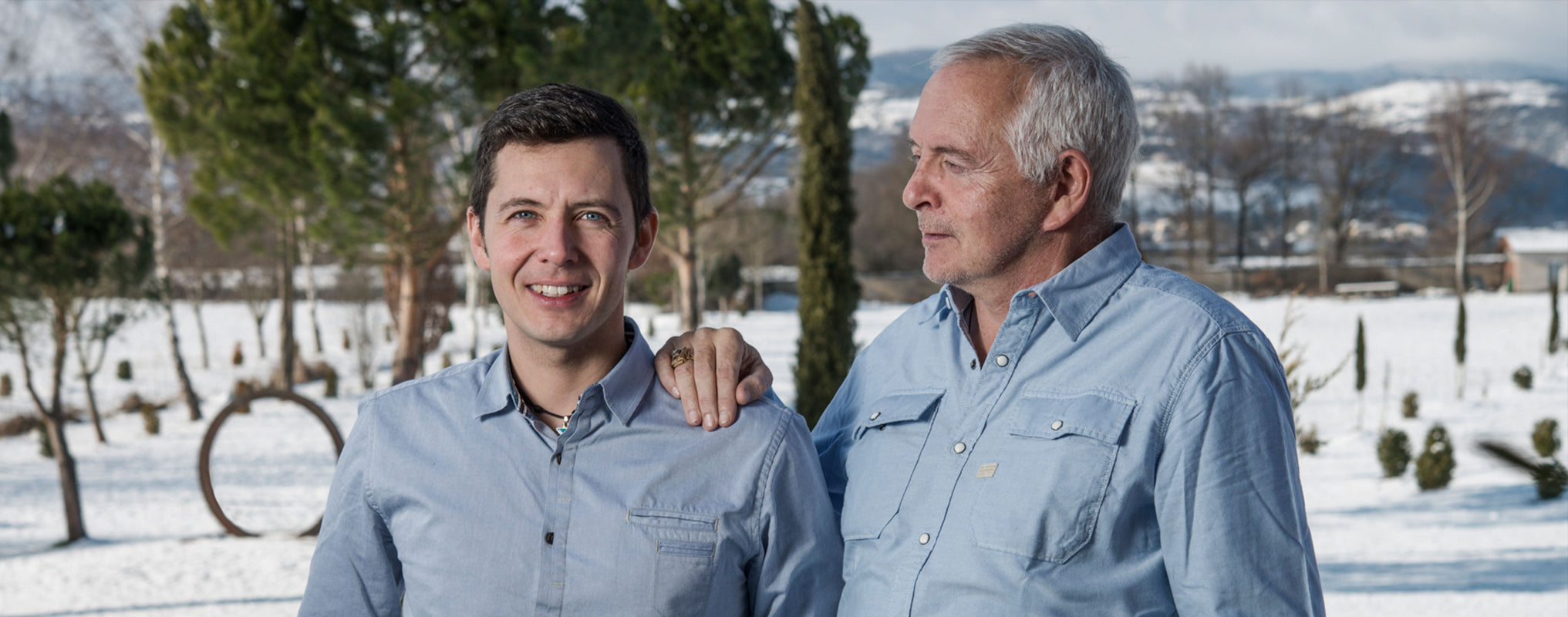AN IMAGE THAT SHAPES ITSELF
In 1984, just as I was getting started, I said to myself as I was driving home from a trade show in Paris:"If I had a shop window in town, that would be great, rather than people only coming by word of mouth". So I gave myself permission to think about it, hesitating between Roanne and Montbrison.
First store

In 1984, just as I was getting started, I said to myself as I was driving home from a trade show in Paris: "If I had a shop window in town, that would be great, rather than people only coming by word of mouth". Roanne was too big for me. In Montbrison, I already had a few customers, I had two children and I told myself that it was a town on a human scale. And then I found a house on rue Tupinerie, which a friend had told me his cousin was selling.
I thought it was too beautiful for me at first, I was sure it would be too expensive for me and that I wouldn't be able to buy it. I waited two months before contacting the owner. One Thursday afternoon, I called the lady: "Hello Madame Marcoux, I'm calling on behalf of Jean-Luc, he told me you were selling...". She cuts me off immediately, surprised, she says: "But how did you know? - It was Jean-Luc who explained to me that your house was for sale - No, but how did you know that the sale had fallen through? - I didn't know - because yesterday we were supposed to sign the sale and the buyer backed out". I signed the preliminary sales agreement for the house in July 1984, happy with my luck in this matter: if I'd called her a few days earlier, she'd have hung up without even taking my number, and she'd never have been able to call me back.
This house was really perfect for me, home and workshop combined, and I moved in after a lot of work, most of which I carried out myself. I opened on October 10, 1984, on Montbrison's shopping street. On the first day, all my attention was focused on the shop windows.
There was very little because I had very few objects to show.
As I already had a local clientele, people passed by and little by little they came in, appreciated the work and gave me a job.
I opened on my own, but after a few months, my cousin Renée came to help me, and I also quickly hired someone to help with the administrative side of things. I soon had a lot of customers and I started training my staff, some of whom, like Fredo in the workshop and Pierre-Yves, had been with me almost from the start...
In early 1989, a journalist from Le Figaro called me: "I've seen your jewelry and I'd like to interview you". I didn't realize how important this request was, and I waited two months before calling her back. Then she said: "On the other hand, given your jewelry, I don't suppose you have a tie or bow tie. We're coming in two weeks, so at least try to borrow a bow tie for the article photo!". So I thought I might as well make that concession. And I got a full-page article with photo and everything in the Figaro Rhône-Alpes. From one day to the next, I went from being a marginal guy who does weird stuff, to a more official, more approachable guy. After the article was published, Guy Poirieux, the mayor of Montbrison, came up to me and said, "How did you manage that? I've been trying for years to get them to come to the town and I just can't manage it". I simply replied: "I didn't do it on purpose".
An image in the making

An important step was my incorporation in 1996. Up until then, I'd always had my nose to the grindstone, doing my own thing without worrying about profitability. My way of working was as if I only produced one-off pieces. Now, tasks are well defined and everyone has their own speciality, whereas before it was more of a scheme where one person made the jewel from A to Z. At a certain point, we had to streamline the production process, because we weren't profitable even though we had work to do. I had hired a dozen people, operating costs had risen and if I hadn't rethought the organization, we would have gone under. I was helped by an accountant who guided me and helped me streamline production. It all started with a simple question he asked me: "How do you do it? I explained to him how I worked, and that's when he introduced more method into our production, without touching creativity.
This step enabled me to have a more coherent operation and to consider the possibility of opening a second boutique. We had a lot of customers coming from Lyon, so in 1999 we took the plunge and opened on rue Édouard Herriot next to Cartier, which I found rather pretentious. A month later, my daughter Joséphine was born...
The opening of this second boutique wasn't something we'd been planning for a long time; the idea just came naturally. It also took confidence in one's work to move to another city. What contributed to this confidence, and what also taught me a lot, were the trade shows. I started exhibiting at them in 1989. This desire to show my work was born of a discussion I'd had with Renée. We'd just come back from the world's biggest jewelry show in Basel and said to each other: "There's nothing like what we do, we should exhibit. It was being different that made us want to show our work. We were lucky enough to represent France at the Munich Fair back in 1990. What's interesting about trade shows is that there's a deadline, you have to be ready on the day, and it's this challenge that's so motivating. What's more, I didn't want to arrive with the conventional items you see at every stand. It's in this climate, between pressure and excitement, that you give your best. What's more, these exhibitions were an opportunity for me to carry out projects that I'd never have finalized otherwise. I had lots of ideas and I always said: "When I've got the time, I'll do that", except that time is something we chase. But trade shows forced me to take up the challenges of the projects I had.

In terms of sales and reputation, it was important for us to attend trade shows, as it enabled us to present our work to international visitors. Most people came to see the prestige brands, with their very "classic" creations, and we had jewelry that was so different from these standards. The fact of having creations that are a little on the fringe means that people either don't like them, or they completely embrace them and don't come back to the traditional brands. There's no middle ground.
It was also interesting to rub shoulders with the competition, because when there are brands like Cartier, Chaumet or Bulgari, you have to be good, and the people I travelled with were always 100% motivated. We're in a region where the feeling of belonging to a group, to a common cause, is very important, and that's what made us strong. Faced with the competition, who at the time only sent representatives, it was a real asset.
At the end of the 90s, we regularly went to Paris to take part in exhibitions by jewellery designers. To put it simply, there was the whole Place Vendôme... and Tournaire, the only designer from the provinces.
This exhibition was called " Jewellery ", and took place once a year. We made it, and took part in the 1998, 1999 and 2000 editions, which helped us to gain notoriety in Paris.
The shows were an opportunity for us to stand out among the other Maisons of Jewellery, but not only thanks to the jewelry we presented.
In our boutique on rue Tupinerie in Montbrison, we had a real half-Jaguar, cut to length, which I had converted into a display case. It came with us to every show, which was no mean feat to transport. But our passion made us indestructible, and once on site, the showcase had a real impact on the public. In fact, at the first show we did, we sold it. The people who bought it from me exported it to the United States, and as luck would have it, a few years later I found it on Broadway in New York. But it's worth noting that this first show car wasn't a Jaguar, it was a Danshun that I'd made unrecognizable, it had a slightly "Destroy" style... The concept of this cut-out car has always created a buzz, it even happened to illustrate the editorial of Option Auto and several articles have been devoted to it.
The guarantee of uncompromising craftsmanship
OUR TITLES AND LABELS







